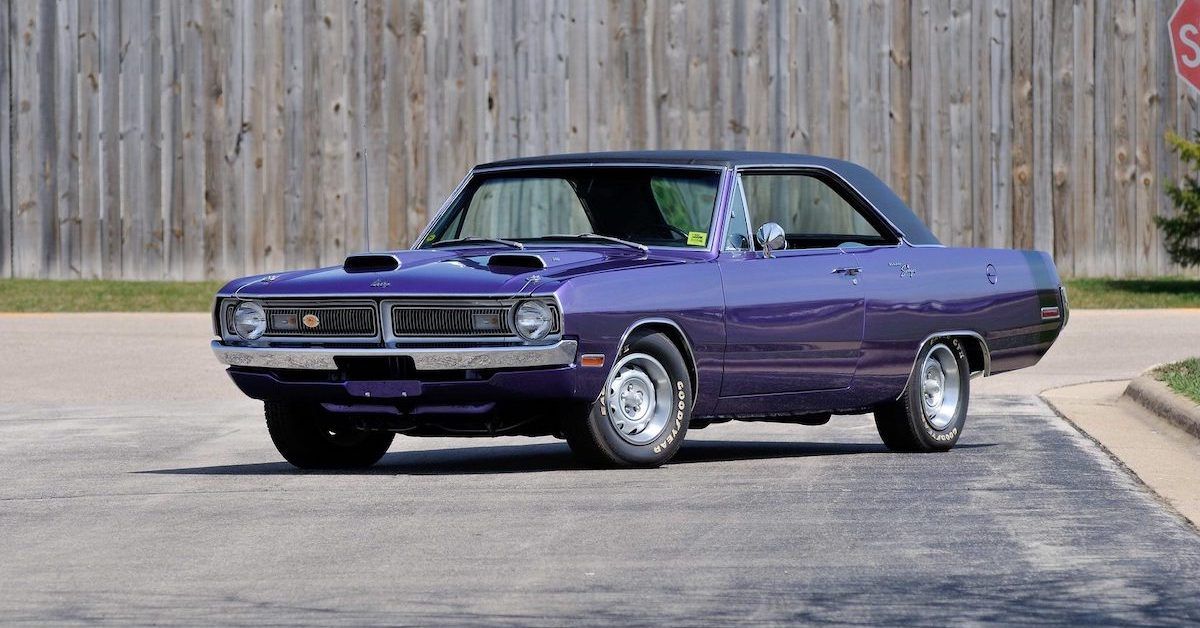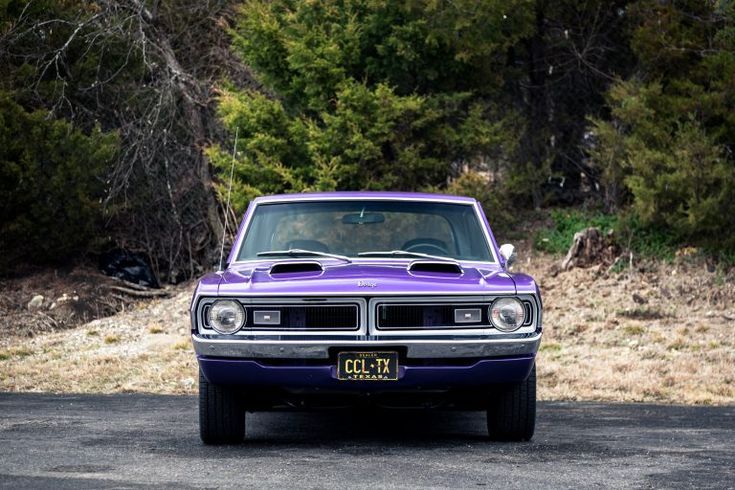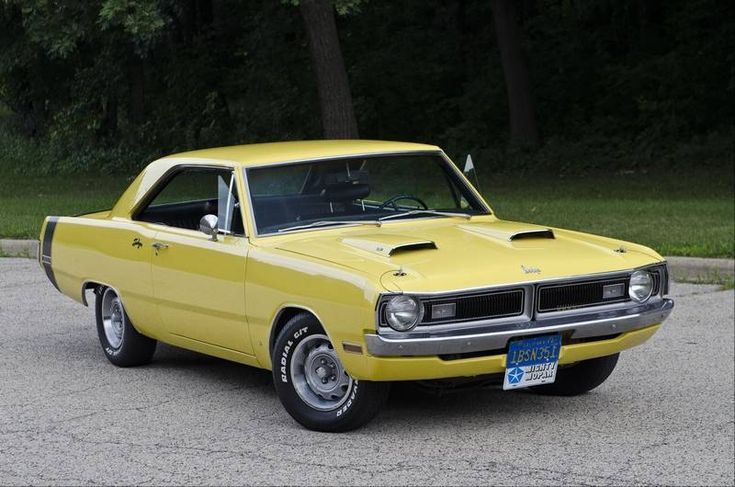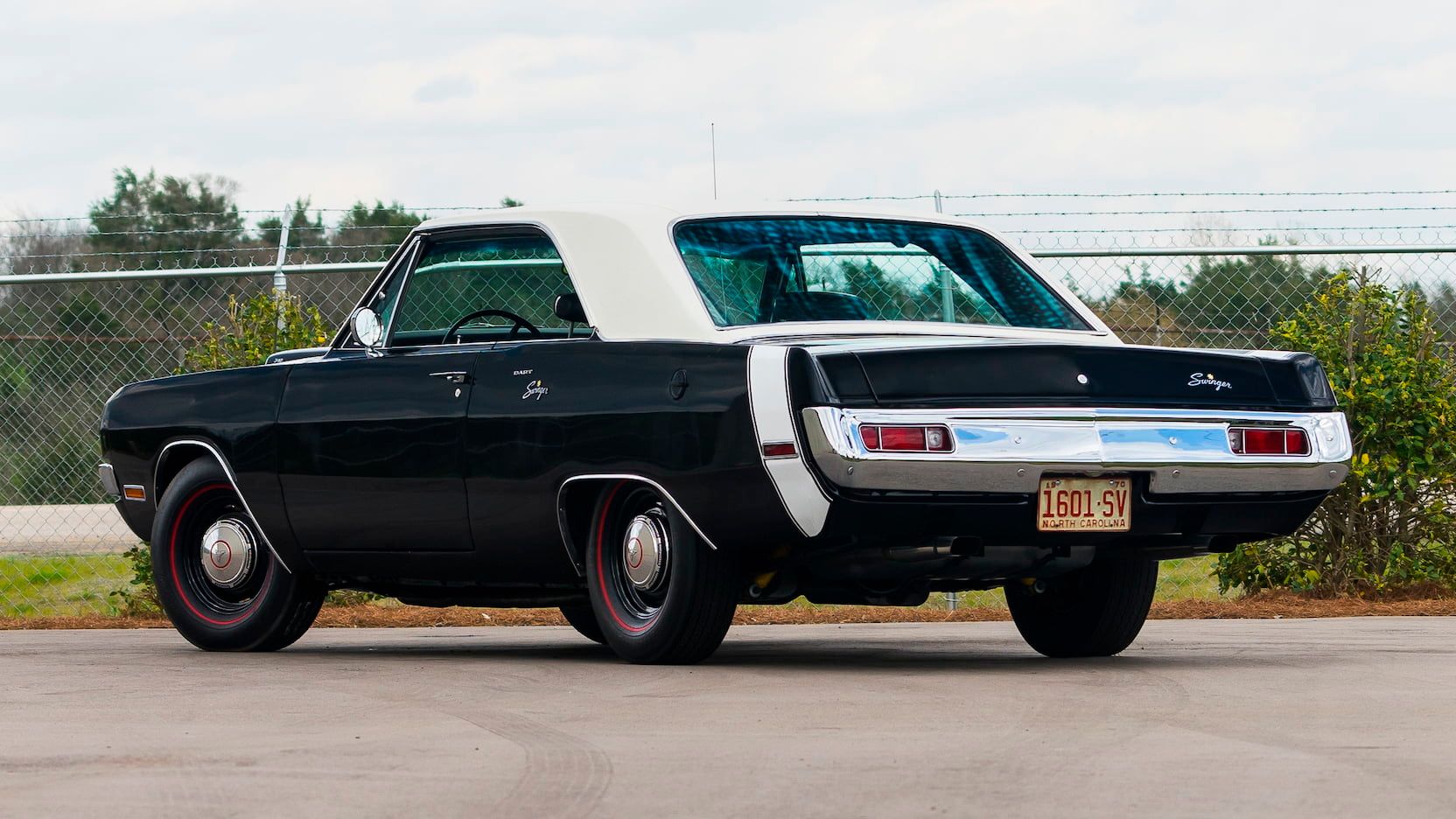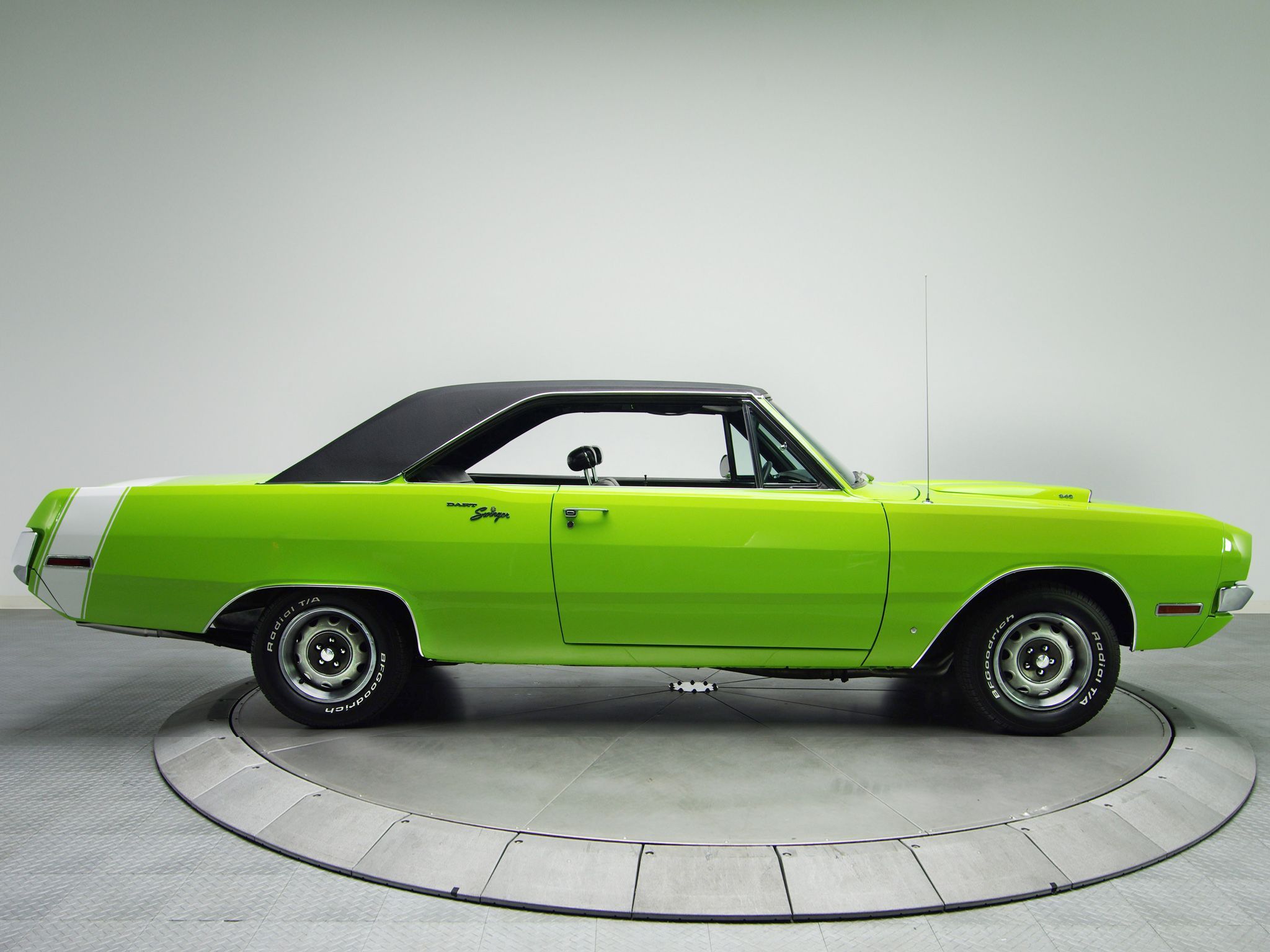The Dart moniker first debuted on a 1956 Chrysler display car created by Carrozzeria Ghia and eventually called the Dart Diablo. The production automobile debuted in its first generation as a low-cost full-size Dodge in 1960 and 1961, then transitioned to a mid-size car in the second generation in 1962, and finally to a compact from 1963 to 1976, during its third and fourth generation.
Dodge originally sold three models: the 170, 270, and GT, which were offered in coupe, sedan, and convertible body styles. A 101-hp 170-cid or 145-hp 225-cid slant six and a 273-cid V8 with 180-hp or 235-hp were available as options. Dodge made their first foray into the burgeoning and promising small vehicle segment with this model. More than 3,700,000 automobiles have been sold throughout the years because of its durability and strength.
The Dart Swinger is an iconic Dodge car, and we'll be highlighting its awesomeness through the 1970 model by focusing on its attributes and what it'll cost to acquire one today.
The Dart Swinger's Rise To Fame
From 1963 to 1966 (third generation), Dodge Dart sales were soaring, so the car's manufacturer decided to make it a little wilder for 1967. During its fourth generation (1967-1976), Dart made its foray into the muscle car craze by becoming a more rugged vehicle. The engine bay of the Dart could now accommodate larger V8s, which was a major point of interest to enthusiasts. By the end of 1967, Dodge had released a new Dart GTS to fight with the Chevy Nova SS.
By 1968, it was available with either a 275-hp 340-cid V8 or a 300-hp 383-cid V8, with a 318-cid V8 as the standard engine. A Torque-Flite automatic, a Hurst four-speed on the floor, or a three-speed column shift manual were available as gearbox choices. Hurst-Campbell, based in Michigan, developed several Darts with 440-cid motors specifically for drag racing. To conserve weight, in 1968 several Darts were supplied with Dodge's 426-cid Hemi, which was shaved of numerous interior components.
The most capable Dart variation, however, didn't come until 1969. Dodge eliminated the two-door sedan and replaced it with the Swinger, a two-door hard-top vehicle. The nameplate remained in use until the Dart was retired in 1976, making it one of the most collectible compact cars of the time. The Dart Swinger 340, a two-door hardtop coupe with a Hurst four-speed, Rallye suspension, exotic colors, and broad 14-inch wheels, debuted in 1969. With the 383 now producing 330 horsepower, the GTS kept running strong.
The Renowned 1970 Dart Swinger Enters The Fray
Refreshing the Dart for 1970 included grille and shape revisions meant to put the car more in line with Dodge's larger models. The 1969 model's 14.1 cubic foot trunk area was unaffected by the redesigned rear style. For enhanced base-model performance and more efficiency, the 170 cubic inches (2.8 L) slant-6 was substituted with a bigger 198 cubic inches (3.2 L) version. The 198 utilized the same block as the 225, whereas the 170 used a separate block. The Swinger 340 now came standard with a three-speed manual transmission.
As we said, the 1970 model year saw a lot of modifications for the Swinger, and it's also the most popular year on the internet. The Swinger was not only altered to set it apart from other Dodge cars such as the Challenger, but it was also updated to meet new safety regulations. These contained side marker lights and reflectors, as well as a steering column and ignition lock that were mandated by the federal government. Swinger 340 sales were strong despite competition from the Dodge Challenger, with 13,785 cars sold.
Excluding the high-end Custom, the Swinger was the model trim utilized on all 1970 two-door hardtops. The Swinger was decorated with repositioned logos placed prominently on each quarter panel, as well as 340 engine call-outs on each hood scoop, to go along with the modified front and back styling and revised hood.
A vinyl roof, blacked-out Performance Paint Treatment on the hood, and sporty hood pins were among the external upgrades, as were additional minor wheel lip and vinyl body side molding trim pieces. There were five High Impact Paint choices: Hemi Orange, Plum Crazy, Banana, Sublime, and Go-Mango, in addition to a variety of basic exterior paints.
The Rallye instrument cluster, which had previously been seen on the A-body Barracuda from 1967 to 1969, was installed in the cabin. It had twin circular gauges surrounding a clock or extra tachometer, with a 150-mph speedometer in the left pod and four auxiliary motor gauges in the right pod. A bench was the default seating option, however, buckets and a center console were offered as alternatives. Upgrades to the vehicle's interior were more modest. The small selection included a pedal dress-up alternative, a steering wheel substitute, and a floor carpet choice.
What Is The 1970 Dart Swinger's Current Worth?
Over the years, the Dart name has come to be linked with affordability and reliability. Although the Dart's original price tag was $2,808 in 1970, aficionados are aware that the car's collector value is steadily increasing. The 1970 Dodge Dart Swinger sold for between $29,000 and $121,000 in perfect condition, $20,900 to $29,000 in excellent condition, $13,750 to $20,900 in good condition, and $1,000 to $13,750 in fair condition, according to statistics based on 53 auction sales.
These prices fall into three categories: the lowest is $1,000, the median is $20,900, and the highest is $121,000. The information is based on auctions all across the world and covers more than a decade. Since the Dart's highest sale price was $121,000, it is clear that buyers are aware of its value and are willing to pay large sums.
The Dart Swinger's appeal stemmed from the fact that it was categorized as a compact automobile by insurance companies, resulting in cheaper insurance prices. The Swinger 340 was substituted the next year by the Demon, which was basically a Plymouth Duster.

